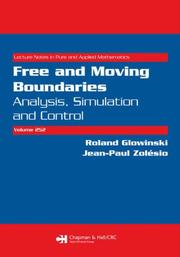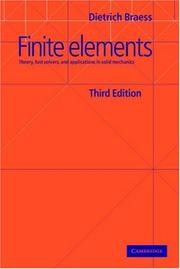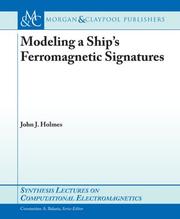| Listing 1 - 10 of 41 | << page >> |
Sort by
|

ISBN: 1584886064 9781584886068 Year: 2007 Publisher: Boca Raton (Fla.) : CRC press,
Abstract | Keywords | Export | Availability | Bookmark
 Loading...
Loading...Choose an application
- Reference Manager
- EndNote
- RefWorks (Direct export to RefWorks)
Book
ISBN: 9043013609 Year: 2007 Publisher: Amsterdam Pearson Education Benelux
Abstract | Keywords | Export | Availability | Bookmark
 Loading...
Loading...Choose an application
- Reference Manager
- EndNote
- RefWorks (Direct export to RefWorks)
Book
ISBN: 9782910685409 2910685403 Year: 2007 Publisher: Monsempron-Libos: Fragile,
Abstract | Keywords | Export | Availability | Bookmark
 Loading...
Loading...Choose an application
- Reference Manager
- EndNote
- RefWorks (Direct export to RefWorks)
Au sommaire de ce guide : Définition du plan ; La maîtrise des forces ; Les éléments ; Outils, matériaux, bâtisseurs, décor.
Architecture religieuse --- Moyen Age --- Elément d'architecture

ISBN: 9780521705189 9780511618635 Year: 2007 Publisher: Cambridge Cambridge University Press
Abstract | Keywords | Export | Availability | Bookmark
 Loading...
Loading...Choose an application
- Reference Manager
- EndNote
- RefWorks (Direct export to RefWorks)
Elasticity --- Finite element method --- Mathematical models
Book
Year: 2007 Publisher: McLean, VA : Federal Highway Administration, Research, Development, and Technology, Turner-Fairbank Highway Research Center,
Abstract | Keywords | Export | Availability | Bookmark
 Loading...
Loading...Choose an application
- Reference Manager
- EndNote
- RefWorks (Direct export to RefWorks)
Book
ISBN: 1107158400 1280850337 9786610850334 0511278500 0511279108 0511277326 0511320825 0511618638 0511277911 Year: 2007 Publisher: Cambridge : Cambridge University Press,
Abstract | Keywords | Export | Availability | Bookmark
 Loading...
Loading...Choose an application
- Reference Manager
- EndNote
- RefWorks (Direct export to RefWorks)
This definitive introduction to finite element methods was thoroughly updated for this 2007 third edition, which features important material for both research and application of the finite element method. The discussion of saddle-point problems is a highlight of the book and has been elaborated to include many more nonstandard applications. The chapter on applications in elasticity now contains a complete discussion of locking phenomena. The numerical solution of elliptic partial differential equations is an important application of finite elements and the author discusses this subject comprehensively. These equations are treated as variational problems for which the Sobolev spaces are the right framework. Graduate students who do not necessarily have any particular background in differential equations, but require an introduction to finite element methods will find this text invaluable. Specifically, the chapter on finite elements in solid mechanics provides a bridge between mathematics and engineering.
Finite element method. --- Elasticity --- Mathematical models.

ISBN: 9780470035801 0470035803 Year: 2007 Publisher: Chichester : John Wiley & Sons, Ltd,
Abstract | Keywords | Export | Availability | Bookmark
 Loading...
Loading...Choose an application
- Reference Manager
- EndNote
- RefWorks (Direct export to RefWorks)
"Developed from the author's combined total of 50 years undergraduate and graduate teaching experience, this book presents the finite element method formulated as a general-purpose numerical procedure for solving engineering problems, governed by partial differential equations. Focusing on the formulation and application of the finite element method through the integration of finite element theory, code development, and software application, this book is both introductory and self-contained, as well as being a hands-on experience for any student." "A First Course in Finite Elements is the ideal practical introductory course for junior and senior undergraduate students from a variety of science and engineering disciplines. The accompanying advanced topics at the end of each chapter also make it suitable for courses at graduate level, as well as for practitioners who need to attain or refresh their knowledge of finite elements through private study"--P. 4 of cover.
Finite element method. --- 519.6 --- FEA (Numerical analysis) --- FEM (Numerical analysis) --- Finite element analysis --- Numerical analysis --- Isogeometric analysis --- computerwiskunde --- Finite element method
Dissertation
Year: 2007 Publisher: Louvain-la-Neuve : Universite catholique de Louvain,
Abstract | Keywords | Export | Availability | Bookmark
 Loading...
Loading...Choose an application
- Reference Manager
- EndNote
- RefWorks (Direct export to RefWorks)
Finite element method. --- Oceans and Seas. --- Éléments finis, Méthode des.
Book
ISBN: 9782130561552 Year: 2007 Publisher: Paris : Presses universitaires de France,
Abstract | Keywords | Export | Availability | Bookmark
 Loading...
Loading...Choose an application
- Reference Manager
- EndNote
- RefWorks (Direct export to RefWorks)
DROIT PENAL --- Principe de légalité --- Application dans le temps --- Principe de territorialité --- Infractions --- Infractions --- Infractions --- TENTATIVE --- Infractions --- PEINES --- FRANCE --- classifications --- élément matériel --- élément moral --- imputabilité --- DROIT PENAL --- Principe de légalité --- Application dans le temps --- Principe de territorialité --- Infractions --- Infractions --- Infractions --- TENTATIVE --- Infractions --- PEINES --- FRANCE --- classifications --- élément matériel --- élément moral --- imputabilité

ISBN: 159829251X 9781598292510 1598292501 9781598292503 Year: 2007 Publisher: San Rafael, Calif. (1537 Fourth Street, San Rafael, CA 94901 USA) Morgan & Claypool Publishers
Abstract | Keywords | Export | Availability | Bookmark
 Loading...
Loading...Choose an application
- Reference Manager
- EndNote
- RefWorks (Direct export to RefWorks)
Ferromagnetic models of ships and submarines that predict or reproduce their magnetic signatures have found applications in the development of both offensive and defensive military systems from World War II to the present. The mathematical basis of generalized coordinate systems will be presented and demonstrated with example applications to analytic spherical and prolate spheroidal magnetic ship models. In addition, the advantages and pitfalls of using complex finite-element- and boundary-element numerical techniques to predict high-order near-field ship signatures will be discussed, followed by a short description of the design and testing of complementary physical scale models. Extrapolation of measured magnetic signatures from testing environments to threat areas using semi-empirical math models will be presented, along with an explanation of their inherent instabilities and methods for regularizing them. These magnetic ship signature modeling techniques are used today in designing optimized signature reduction systems that have a minimum impact on ships and their systems. The discussion will be closed with an important discussion of the verification and validation of magnetic models of surface ships and submarines.
Boundary element methods. --- Ferromagnetism --- Finite element method. --- Magnetism of ships --- Mathematical models. --- Ships, Magnetism of --- FEA (Numerical analysis) --- FEM (Numerical analysis) --- Finite element analysis --- BEM (Engineering analysis) --- BIE analysis --- BIE methods --- Boundary element analysis --- Boundary elements methods --- Boundary integral equation analysis --- Boundary integral equation methods --- Boundary integral methods --- Magnetic boundary-element models. --- Magnetic finite-element models. --- Magnetic scale models. --- Magnetic ship models. --- Model verification and validation. --- Multi-pole expansion. --- Naval vessel empirical models. --- Prolate spheroidal coordinates. --- Spherical coordinates. --- Magnetic ranges --- Numerical analysis --- Isogeometric analysis --- Magnetism
| Listing 1 - 10 of 41 | << page >> |
Sort by
|

 Search
Search Feedback
Feedback About UniCat
About UniCat  Help
Help News
News